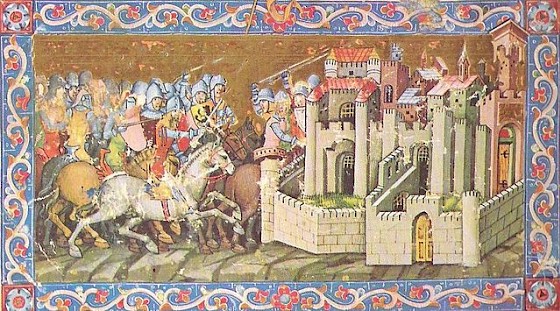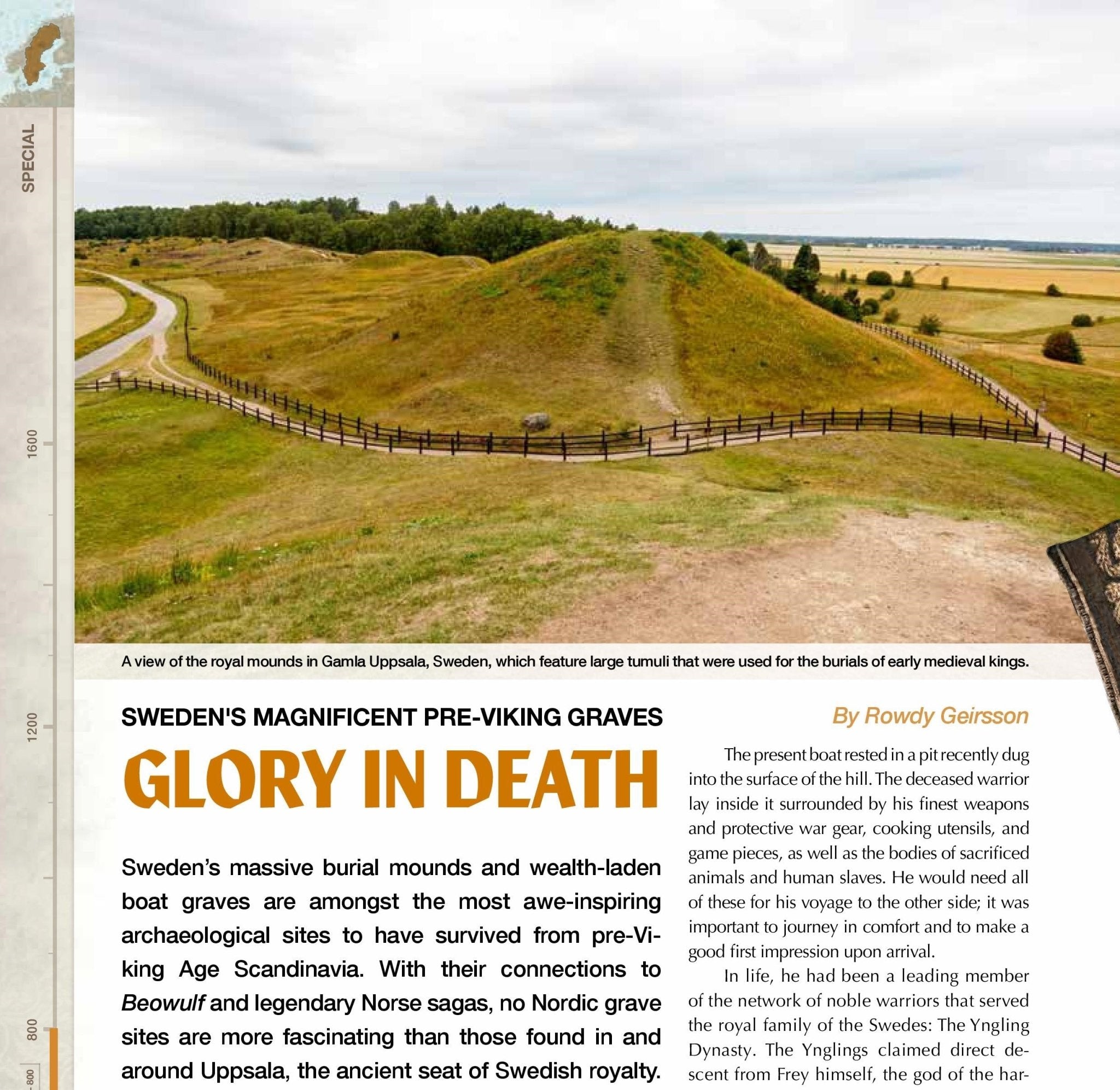How to Defend a Castle
One of the most unique medieval sources on how to defend a castle against a siege comes from Konungs skuggsjá - The King’s Mirror, an Old Norse text from the mid-13th century. Made for the son of King Håkon Håkonsson, it is written in the form of a dialogue between father and son and covers many topics, ranging from how to manage a royal household to the strange creatures that can be found in Greenland.

In one section, the son asks his father “to say something about those which you think are most effective in besieging or defending castles.” The father first talks about ways to besiege a castle, and then offers this long section, explaining the methods to defend against various types of attacks.
Those who have to defend a castle may also make use of these weapons which I have now enumerated and many more: trebuchets both large and small, hand slings and staff slings. They will find crossbows and other bows, too, very effective, as well as every other type of shooting weapons, such as spears and javelins both light and heavy. But to resist the trebuchets, the cat, and the engine called the ram, it is well to strengthen the entire stone wall on the inside with large oaken timbers, though if earth and clay are plentiful, these materials had better be used. Those who have to defend castles are also in the habit of making curtains of large oak boughs, three or even five deep, to cover the entire wall; and the curtain should be thoroughly plastered with good sticky clay. To defeat the attacks of the ram, men have sometimes filled large bags with hay or straw and lowered them with light iron chains in front of the ram where it sought to pierce the wall. It sometimes happens that the shots fall so rapidly upon a fortress that the defenders are unable to remain on the battlements; it is then advisable to hang out brattices made of light planks and built high enough to reach two ells above the openings in the parapet and three ells below them. They should be wide enough to enable the men to fight with any sort of weapons between the parapet and the brattice wall, and they should be hung from slender beams in such a way that they may be readily drawn in and hung out again later, as one may wish.
The hedgehog will be found an effective device in defending a castle. It is made of large, heavy beams armed along the ridge with a brush of pointed oak nails; it is hung outside the parapet to be dropped on anyone who comes too near the wall. Turnpikes made of large heavy logs armed with sharp teeth of hard oak may be raised on end near the battlements and kept ready to be dropped upon those who approach the castle. Another good device is the briar, which is made of good iron and curved thorns as hard as steel with a barb on every thorn; and the chain, from which it hangs, as high up as a man can reach must be made of spiked links, so that it can neither be held nor hewn; higher up any kind of rope that seems suitable may be used, only, it must be firm and strong. This briar is thrown down among the enemy in the hope of catching one or more of them and then it is pulled up again. A running wheel is also a good weapon for those who defend castles: it is made of two millstones with an axle of tough oak joining them. Planks sloping downward are laid through the openings in the wall; the wheel is rolled out upon these and then down upon the enemy.
A shot wagon is also a good device. This is made like any other wagon with two or four wheels as one likes and is intended to carry a load of stones, hot or cold, as one may prefer. It must also be provided with two firm and strong chains, one on each side, which can be depended on to check the wagon even where it has a long track to run upon. It is meant to run on planks set with a downward slope, but one must be careful to keep the wheels from skidding off the planks. When the chain checks the speed, the wagon shoots its load out upon the men below. The more uneven the stones are, some large and some small, the more effective the load will be. Canny men, who are set to defend a wall and wish to throw rocks down upon the attacking line or upon the penthouse, make these rocks of clay with pebbles, slingstones, and other hard stones placed inside. The clay is burned hard enough on the outside to endure the flight while the load is being thrown; but as soon as the rocks fall they break into fragments and consequently cannot be hurled back again. To break down stone walls, however, large, hard rocks are required. Similarly, when one hurls missiles from a stone fortress against an opposing wooden tower or upon the axletrees which support siege engines, towers, scaling ladders, cats, or any other engine on wheels, the larger and harder the rocks that are used, the more effective they will be.
Boiling water, molten glass, and molten lead are also useful in defending walls. But if a cat or any other covered engine which cannot be damaged by hot water is being pushed toward a castle, it is a good plan, if the engine is lower than the walls, to provide beams carefully shod with iron underneath and in addition armed with large, sharp, red-hot plowshares. These are to be thrown down upon the wooden engine in which the plowshares are likely to stick fast, while the beams may be hoisted up again. This attack should be followed up with pitch, sulphur, or boiling tar.
Mines dug in the neighborhood of a castle are also an excellent protection; the deeper and narrower they are, the better it is; and where men are showing mounted engines toward the walls, it were well if there were many mines. All mines should have a number of small openings, which must be covered so as not to be visible on the surface. They should be filled with fuel of the most inflammable sort, peat or anything else that burns readily. When a castle is attacked at night either from wooden towers or scaling ladders or any other engine on wheels, the defenders should steal out and fire the mines.
Now if it should happen that the enemy’s stones come over the battlements with such violence that the men cannot remain in the open to defend the wall, it is a good plan to set up strong posts cut from thick oak and to lay large and tough cross beams upon these, then to roof the whole over with firm oak timbers, and finally cover the roofing with a layer of earth not less than three or four ells in depth, upon which the rocks may be allowed to drop. In like manner the attack of a wooden tower that is moving toward a castle may be foiled by setting up strong, firm posts rising considerably higher than the attacking tower. But a more effective contrivance than all the engines that I have now described is a stooping shield-giant which breathes forth flame and fire. And now we shall close our account of the engines that are useful in defending castle walls with the reminder that every sort of weapon with which one can shoot, hurl, hew, or thrust, and every kind that can be used in attack or defense may be brought into service.
See also their section on how to besiege a siege. You can also read the entire English translation of Konungs skuggsjá, which was made by Laurence Marcellus Larson in 1917, via Archive.org.




